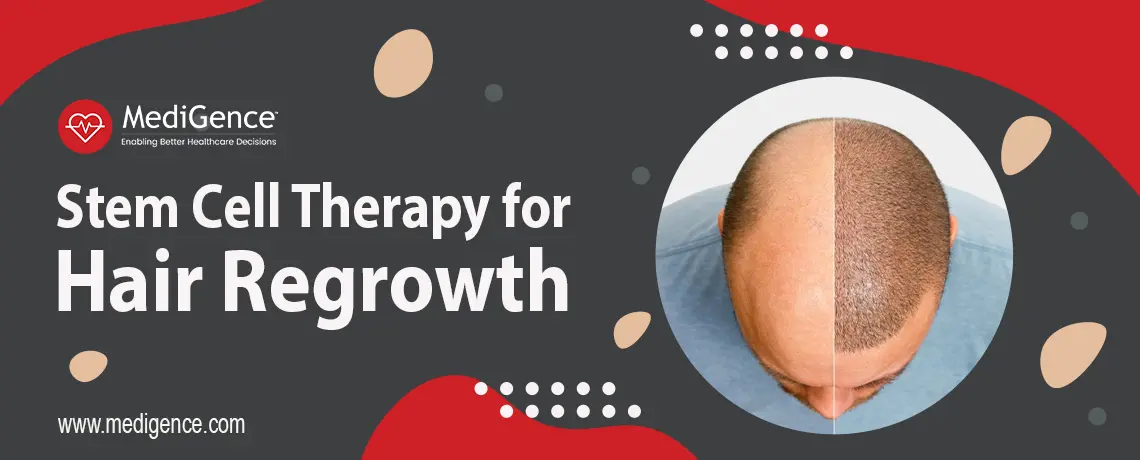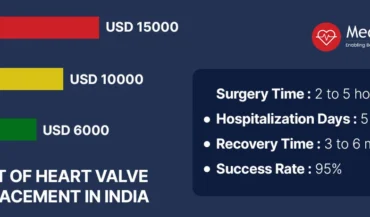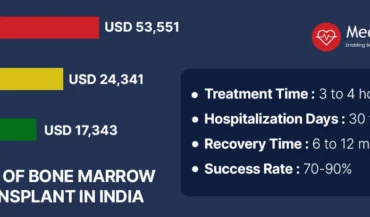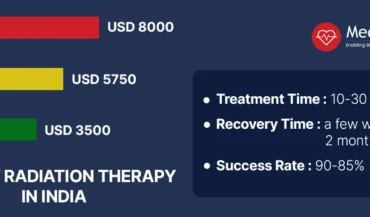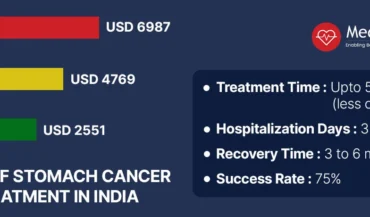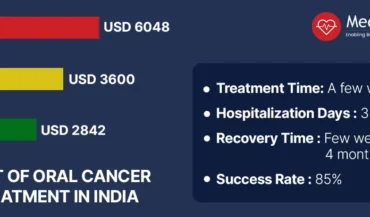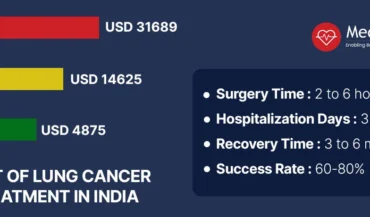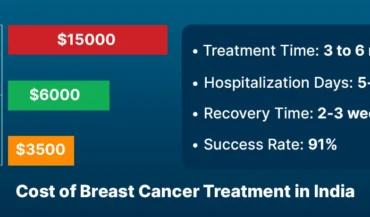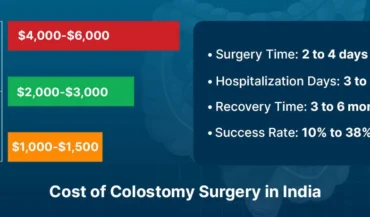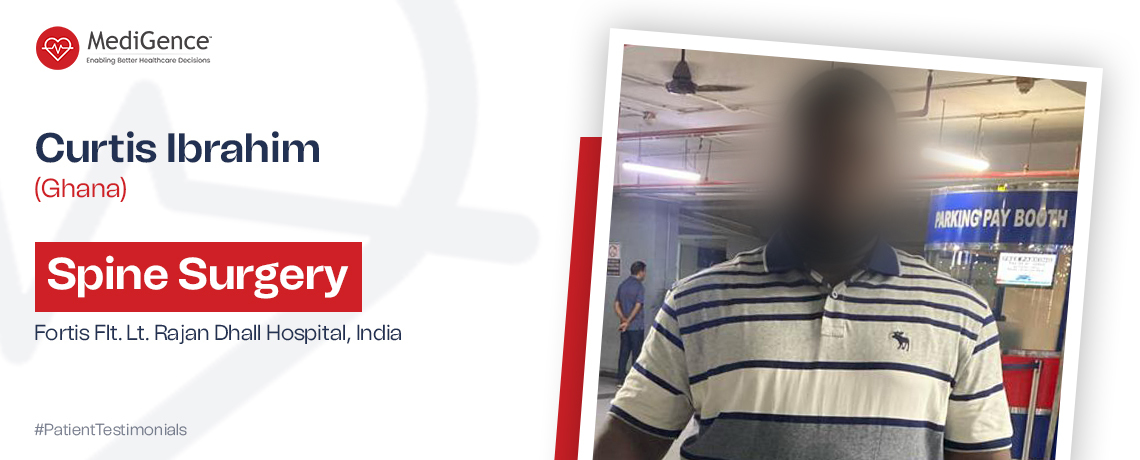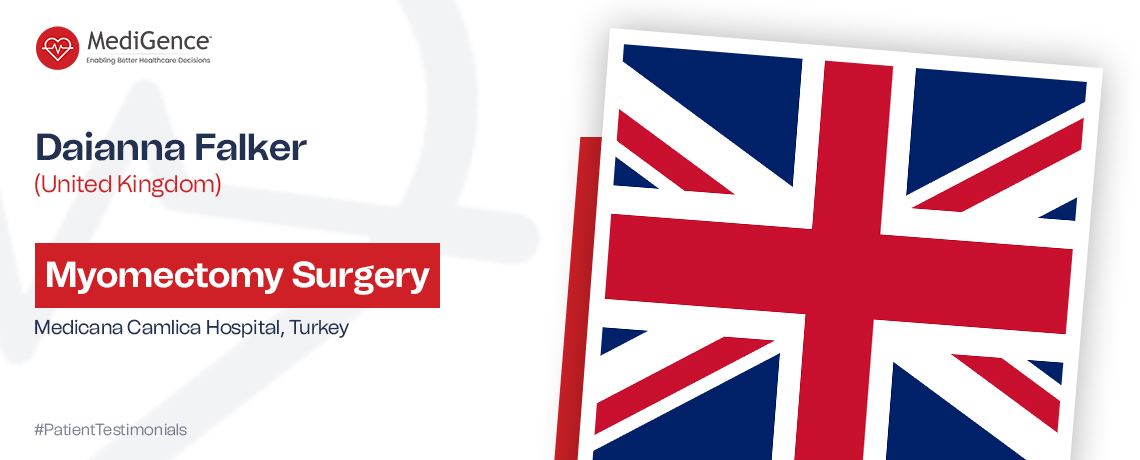Overview
Hair loss affects both men and women and is the most frequent cause of hair loss worldwide. Male pattern hair loss is a term used to describe hair loss in men. Female pattern baldness is a condition that affects women. Androgenic alopecia is the medical name for hair loss that occurs in both men and women. Hair loss can be slowed or stopped with this treatment. It may also aid in hair regrowth. The earlier treatment begins, the more effective it will be. You will continue to lose hair if you do not get therapy. As a result, you don’t have to be concerned. Hair loss concerns can now be remedied thanks to a variety of modern technical breakthroughs and developments. One of these recently invented and researched therapies is stem cell treatment, which has been offered as a minimally invasive treatment for a variety of medical disorders. Stem cell hair therapy, unlike other hair transplant treatments that rely on transferring hair follicles, is aimed to restore the growth of natural hair follicles on your scalp for long-term results. The stem cells in your body are in charge of healing and repairing tissues. GAIA, in association with CEMAB, has partnered with MediGence to offer stem cell hair restoration.
Symptoms & and Causes of Hair Loss
Hair loss can manifest itself in a variety of ways, depending on the cause. It might strike abruptly or gradually, and it can affect your entire body or just your scalp.
Symptoms
- Gradual thinning on top of head
- Circular or patchy bald spots
- Sudden loosening of hair
- Full-body hair loss
- Patches of scaling that spread over the scalp
Causes
On average, people lose 50 to 100 hairs per day. Because new hair grows in at the same time, this is usually undetectable. Hair loss happens when the hair that has fallen out is not replaced by new hair. One or more of the following factors are commonly linked to hair loss:
- Family history (heredity)
- Hormonal changes and medical conditions
- Medications and supplements
- Radiation therapy to the head
- A very stressful event
- Hairstyles and treatments
Risk Factors for Increase in Hair loss
A number of factors can increase your risk of hair loss, including:
- A family history of balding on your mother’s or father’s side
- Age
- Significant weight loss
- Certain medical conditions, such as diabetes and lupus
- Stress
- Poor nutrition
Types of Hair Loss Problems Treated by Stem Cell Therapy
Androgenetic Alopecia
Androgenetic alopecia is the most prevalent form of hair loss in the United States, affecting more than 50 million men and 30 million women. Androgenetic alopecia, also known as male or female pattern hair loss, is a hereditary condition that can be treated with medication or surgery.
Telogen Effluvium
When a high number of follicles on the scalp enter the resting phase of the hair development cycle, called telogen, but the next growth phase does not begin, telogen effluvium ensues. Hair falls out all over the scalp, and no new hair grows in its place. This form of hair loss is usually caused by a medical event or condition, such as a thyroid imbalance, delivery, surgery, or a fever. Telogen effluvium can also be caused by a vitamin or mineral deficiency (iron deficiency is a common cause of hair loss in women) or the use of certain medications, such as isotretinoin, which is used to treat acne, or warfarin, which is a blood thinner. This sort of hair can also be caused by starting or quitting oral contraceptives (birth control pills).
Anagen Effluvium
Anagen effluvium is a kind of hair loss caused by medicinal treatments like chemotherapy. These powerful and quick-acting drugs target cancer cells, but they also have the potential to stop hair follicle creation in the scalp and other parts of the body. Hair normally grows back on its own after chemotherapy. Dermatologists can prescribe medicines to help hair regrow faster.
Alopecia Areata
Alopecia areata is an autoimmune disease in which the immune system destroys healthy tissues, such as hair follicles. Hair falls out as a result of this, and new hair does not grow.
Adults and children alike can be affected by this disorder, and hair loss can occur suddenly and without warning. Scalp hair usually falls out in small places and is not unpleasant. Hair from other regions of the body, such as the brows and eyelashes, may fall out as well. Alopecia totalis, or complete hair loss, may develop as a result of this condition.
Tinea Capitis
Tinea capitis, often known as scalp ringworm, is a fungus that attacks the scalp and causes hair loss in youngsters. This condition causes hair loss in patches, which might be circular, resulting in bald spots that can grow larger over time. The affected areas are frequently red or scaly, and the scalp is itching. On the scalp, sores or blisters that exude pus might form. As a result of the immune system fighting the infection, a kid with the illness may have swollen glands in the back of the neck or a low-grade fever.
Cicatricial Alopecia
Scarring alopecia, also known as cicatricial alopecia, is an uncommon kind of hair loss in which inflammation destroys hair follicles and scar tissue forms in their stead. Hair does not regrow after scar tissue occurs. Hair loss can start slowly enough that symptoms aren’t visible, or it can happen all at once. Severe itching, swelling, and red or white lesions on the scalp that resemble a rash are some of the other symptoms. This form of hair loss can affect both men and women at any age.
Hair Shaft Abnormalities
Hair loss can be caused by a variety of hair shaft problems. Hair strands thin and weaken as a result of these situations, making them subject to breakage. Hair loss is caused by a break somewhere along the hair shaft, which is the visible section of a hair strand, rather than in the follicle. This can cause overall hair thinning as well as a large number of tiny, fragile hairs. Some hair shaft irregularities can be reversed by making simple modifications to how you style and manage your hair. Loose Anagen Syndrome, Trichotillomania, and Traction Alopecia are examples of hair shaft abnormalities.
Hypotrichosis
Hypotrichosis is a rare hereditary disorder in which the scalp and body generate very little hair. Initially, babies born with this disorder may have normal hair growth; but, after a few months, their hair falls out and is replaced with thin hair. By the age of 25, many hypotrichosis patients are bald. This disorder has few treatment options, but some medications may help thicken or regenerate hair.
Importance of Stem Cell Therapy for Hair Regrowth
There are three stages to a hair growth cycle. Hair develops rapidly during the anagen phase. This stage could endure for a long time. Hair stops growing and separates from its follicle, the structure beneath the skin that maintains the hair in place, during the catagen phase. The catagen phase lasts for around ten days. The follicle rests for two or three months during the telogen phase, after which the hair falls out. As a new hair grows in the same follicle, the next anagen phase begins. This natural cycle causes most people to lose 50 to 100 hairs per day.
Hair may begin to fall out more quickly than it is regenerated if this cycle is disturbed or if a hair follicle is damaged, resulting in symptoms such as a receding hairline, hair falling out in patches, or general thinning. Stem cell therapy has emerged as one of the best and safest ways for hair regeneration, thanks to a recent advancement in treatment possibilities. Stem cell hair restoration is a cutting-edge hair transplant process that uses your body’s stem cells to promote the growth of your own natural hair. The stem cells in your body are in charge of healing and repairing tissues. These stem cells are vital building pieces that have the ability to convert into any cell type. Countless mesenchymal stem cells reside in the layer of fat beneath the epidermis. Thanks to revolutionary technology, these mesenchymal stem cells can be harvested in order to take advantage of their regenerative properties. Your stem cells, when injected into regions where hair is thinning, can help rebuild hair follicles and restore hair growth.
Eligibility of Stem Cell Therapy for Hair Regrowth
Although stem cell transplant is the safest process for treatment or restoration, still there are many factors that are considered for deciding on the eligibility for stem cell hair restoration treatment.
Since, not all patients can survive the conditioning regimen and the treatment’s negative effects, not all patients are eligible for stem cell transplantation. If a patient has other serious health issues, he or she may not be eligible for conventional transplantation. Reduced-intensity allogeneic stem cell transplantation may be a possibility for some of these patients. The stem cell experts & their healthcare staff will consider the following factors when determining if he or she is a good candidate for stem cell transplantation.
- The general health and medical status of the patient.
- The medical condition or sickness, as well as its stage.
- Previous medical therapy.
- The chances of the disease responding to the transplant.
- The capacity to employ the patient’s own stem cells or the availability of a compatible donor.
Hair thickness and density can be improved with stem cell hair therapy in both men and women. Those who have some hair on their scalp are great candidates for stem cell hair restoration; patients who are entirely bald may not be candidates for this therapy. During your appointment at GAIA stem cells (working in association with CEMAB stem cell laboratory), the experts will determine if stem cell hair regrowth is correct for you.
Stem Cell Treatment Protocol used by GAIA (in association with CEMAB) for Hair Regrowth
GAIA is working as a logistics partner with CEMAB stem cell laboratory, which is considered to be the first Stem Cell and Biotechnology Center. It is responsible for the processing of stem cells in the lab before injecting them into the human body. The majority of people are left with no choice but to undergo hair transplants, which is a medical process that few people are willing to do.
The good news is that stem cell science is making it easier for our bodies to regenerate hair, and platelet rich plasma has played a significant role in this new medical advancement. PRP treatments are not new to the medical world, and they’ve been utilized to treat a variety of ailments as well as pain management. However, scientists have discovered that combining PRP therapy with stem cells can help with hair regeneration, which is great news for many.
The Process of Stem Cell Treatment for Hair Restoration
- The procedure starts with a blood draw from your arm. To increase the concentration of platelets, the blood components are separated in a centrifuge. Platelets are responsible for the healing and regenerative processes because they include a wide range of growth factors.
- After being infused with 50 million mesenchymal stem cells, the platelets are injected into the scalp, where they act to encourage hair growth. Follicular progenitor cells are activated by stem cell treatment.
- Even the most difficult hair loss disorders can be reversed and treated with stem cell and PRP therapy. As stem cells and platelets drive the hair cycle’s anagen phase, or what many refer to as the growth phase, the survival rate of hair follicles keeps increasing.
- The technique is less invasive, and the recovery time is much faster than surgery. Since, Stem Cells and PRP promote faster cell proliferation, the procedure’s results are very quick. In as little as one to two months, you can notice evidence of new hair growth, with the best benefits seen in only a few months. Within a year, the full effects of the hair regeneration are visible.
GAIA & CEMAB developed five treatment protocols for medical practitioners and surgeons based on scientific research, to follow the procedure of stem cell treatment. Treatment protocol used for hair restoration or regrowth is-
- It consists of a two-day period, including the injection of a minimum of 50 million cord tissue-derived MSCs (Mesenchymal Stem Cells) directly into the scalp.
- The procedure takes approximately 45 minutes
- The protocol is minimally invasive to the patient and has very little downtime. Patients normally travel home two days following their scheduled appointment.
Effective treatment for hair loss begins with finding the cause. The primary goal of GAIA’s protocol is to stimulate hair follicles growth which can last for several years.
Advantages of Stem Cell Therapy for Hair Regrowth
Stem cell hair transplantation is thought to have the potential to influence the future of hair regrowth. The success rate of stem cell hair transplants is quite promising, according to the existing studies. Many people who have hair loss can observe hair restoration with a correct diagnosis. If you need regrowth treatment, the sooner you begin, the more likely you will see regrowth.
A stem cell hair transplant is similar to a typical hair transplant in that it replaces the hair follicles with stem cells. A stem cell hair transplant, on the other hand, takes a small skin sample from which hair follicles are collected rather than removing a significant number of hairs to transplant to the area of hair loss. Stem cell therapy has the ability to provide long-term relief from a condition.
Stem cell hair restoration can:
- Regenerate your natural hair follicles
- Add density to areas of thinning hair
- Address male and female pattern baldness
- Add natural-looking fullness to your hairline
- Achieve long-lasting hair restoration results
How To Apply For Stem Cell Treatment for Hair Regrowth?
Applying for stem cell therapy is very convenient and hassle-free for you through MediGence-
Step1– Send us an inquiry with relevant details of your condition
Step2– Our team of experts will validate your case
Step3– A dedicated patient care manager will be assigned to your case
Step4– Once validated, you can also avail a teleconsultation with our stem cell specialist
Frequently Asked Questions
In the case of hair regeneration, this is impossible to define whether it will solve your problem permanently or not. If you don’t take the necessary precautions and care following your stem cell treatment, your hair may begin to fall out again. Stem cell hair restoration is a cutting-edge hair transplant process that uses your body’s stem cells to promote the growth of your own natural hair.
Hair follicle stem cells become activated during the growth phase to repair the hair follicle and hair, and hairs grow longer each day. There is no need for recovery time, however, heavy exertion should be avoided for a week. Where the fat has been removed, some scarring is to be expected.
Stem cell hair restoration is a mix of stem cell therapy and platelet-rich plasma treatment to restore hair. The layer of fat just beneath your skin (known as adipose tissue) has a large number of ADSCs (adipose stem cells) (adipose-derived stem cells). Liposuction is used to remove modest quantities of excess fat from the body during stem cell hair regeneration. Small cannulas with stem cell-rich fat are placed beneath the skin through tiny incisions. To purify the sample, the stem cells are concentrated and spun in a centrifuge. After that, your purified stem cells are mixed with platelet-rich plasma from your blood. This stem cell and PRP mixture is injected into the scalp and immediately begins interacting with your existing hair follicles, repairing and encouraging hair growth. Existing stem cells on your scalp are also activated by the mixture, which helps to rebuild losing hair even more. Scientists discovered that stem cells can totally restore hair after seeing how they can help repair follicles. Simple stem cell hair treatments involve implanting stem cells into the hair follicle so that new hair can develop from them.
MediGence has always been very committed towards the importance of gaining and maintaining the trust of its patients and the physicians with whom it works. We’ve always strived for excellence and expanded our service offerings to our patients in order to increase healthcare accessibility and quality of life for them. We’ve formed a number of useful and reputable partnerships with world-class hospitals and doctors all over the world. We, like the others, have brought GAIA- Advanced Stem Cells from Colombia (a world-renowned stem cell laboratory) on board, as we recognise the importance of stem cells in the future. Stem cells are often regarded as the medicine of the future.
Choose us as your medical accessibility partner for a variety of reasons:
- Patients’ convenience is our motto and for that, in these years of our existence, we have launched several patient-centric services & products such as Telemedicine, thinkTwice, Prebundled & Prenegotiated Packages for availing treatment abroad with additional benefits, ournetwork of 4000+ doctors in 20+ countries, our exploring platform for multiple treatment overseas, our logistics arrangement, and much more.
- MediGence ensures that you receive complete attention and a stress-free medical experience in addition to delivering products and services. Keeping this in mind, we’ve assigned specialist case managers to your case, who will handle all of your coordination with the doctor, healthcare staff, and hospital, as well as any other necessary logistics arrangements.
- Not only do we have a large network of healthcare providers visiting or connecting with us from all over the world, but we also have a wide network of patients who have complete faith in us to handle their entire medical journey. We have been the most popular healthcare providers among patients from Turkey, India, Russia, Spain, Singapore, Lithuania, the United Arab Emirates, the United States, the United Kingdom, and a variety of other countries.
- We chose to work with GAIA for stem cell therapies because we wanted to broaden our service offerings and help suffering people all over the world avoid invasive surgical procedures.
- Together, we are providing stem cell treatment for successfully treating autoimmune or inflammatory diseases like Hair regrowth, Multiple Sclerosis, Parkinson’s, Arthritis, Lupus, Inflammatory Bowel Disease, Diabetes, Psoriasis, Graves’ Disease, and many others – often with breathtaking results.
- We have a network of several doctors from Central and South America. who have helped thousands of patients restore their health with STEM CELL therapies. They have demonstrated an impeccable safety profile, and the results have often been breathtaking, utilizing these advanced treatments that are not available in the world.
- We work with pioneers of stem cell science who have bought this cutting edge technology in the world and that too at affordable rates.
- Many celebrities have benefited from stem cell therapies and they have also encouraged people in many talk shows by telling them the advantages of stem cells.
- There is no compromise on the treatment quality due to reduced prices, as we have already established beneficial mutual collaborations with the hospitals & doctors.
- Before undertaking the stem cell treatment, MediGence always prefers you to consult with the specialists via phone consultation or teleconsultation, which can help you with more clarity regarding your condition and treatment eligibility, possibilities, durability, & other factors.
Yes, stem cell therapy is a safe procedure. The physician must follow proper cell administration techniques. Patients must also be screened for treatment candidacy as all people may not be a candidate for stem cells. The method is less invasive, and the recovery time is much faster than surgery. Like any other surgery or treatment procedure, stem cell therapy also has some common side effects just after the treatment. You may have swelling, redness, and irritation around the donor location, as well as the scalp, which are common side effects of stem cell hair regeneration. Within a few days, these adverse effects should go away. The next day, patients can usually resume their normal routines. Within 4-6 months of starting treatment, you should observe improvements. In the months following your treatment, you should schedule follow-up sessions to assess your stem cell hair transplant results.
It is determined by the number of sessions that have been advised to you. In the case of a single session, you should plan on staying for roughly 5 days. GAIA may occasionally allow you to leave after your single session in two days. After a 15-day break from the first session, the second session is normally undertaken. As a result, depending on the diagnosis and severity of the ailment, the length of stay may vary from person to person. MediGence offers follow-up appointments as well. After receiving stem cell treatment, most patients do not require any follow-up consultations because they can pursue rehabilitation therapy in their own country. Nonetheless, 1-2 follow-up consultations after your sessions will be included in your treatment procedure, depending on your needs.
Yes, you can speak with one of our stem cell experts before making your decision to travel.
You can schedule a phone appointment with one of our highly qualified “Stem Cell Treatment” specialists, who will review your medical history and walk you through the treatment process and prospects. He or she will determine your treatment eligibility based on your medical records and will respond to any questions you may have. Your call will be scheduled if you simply complete the booking instructions.
MediGence is a leading healthcare technology company in the medical travel market, offering patients throughout the world a single, seamless platform for all of their medical needs, from browsing and comparing to booking and reviewing. We assist our patients in selecting the best destinations with the greatest medical treatment, and our team of professionals considers every part of their journey and follows them on a dependable route to recovery.
The following is the response to the question of how we can help you with the complete stem cell process-
- MediGence connects you with a network of doctors and services
- MediGence is in charge of your complete stem cell treatment process, from booking to recovery.
- MediGence- Walks you through the full treatment process as well as the benefits you’ll receive.
- Transparently displays the cost of stem cell therapy for each disease/condition
- We’ll put you in touch with one of our ‘Stem cell specialists’ for a quick chat about your eligibility and treatment protocol.
- Make an appointment with your doctor for an online consultation before you travel.
- Make an appointment with GAIA for your treatment.
- When you’re ready to fly for treatment, make your plans.
- Your treatment plan includes follow-up consultations.
References:







 Sep 25, 2023
Sep 25, 2023 